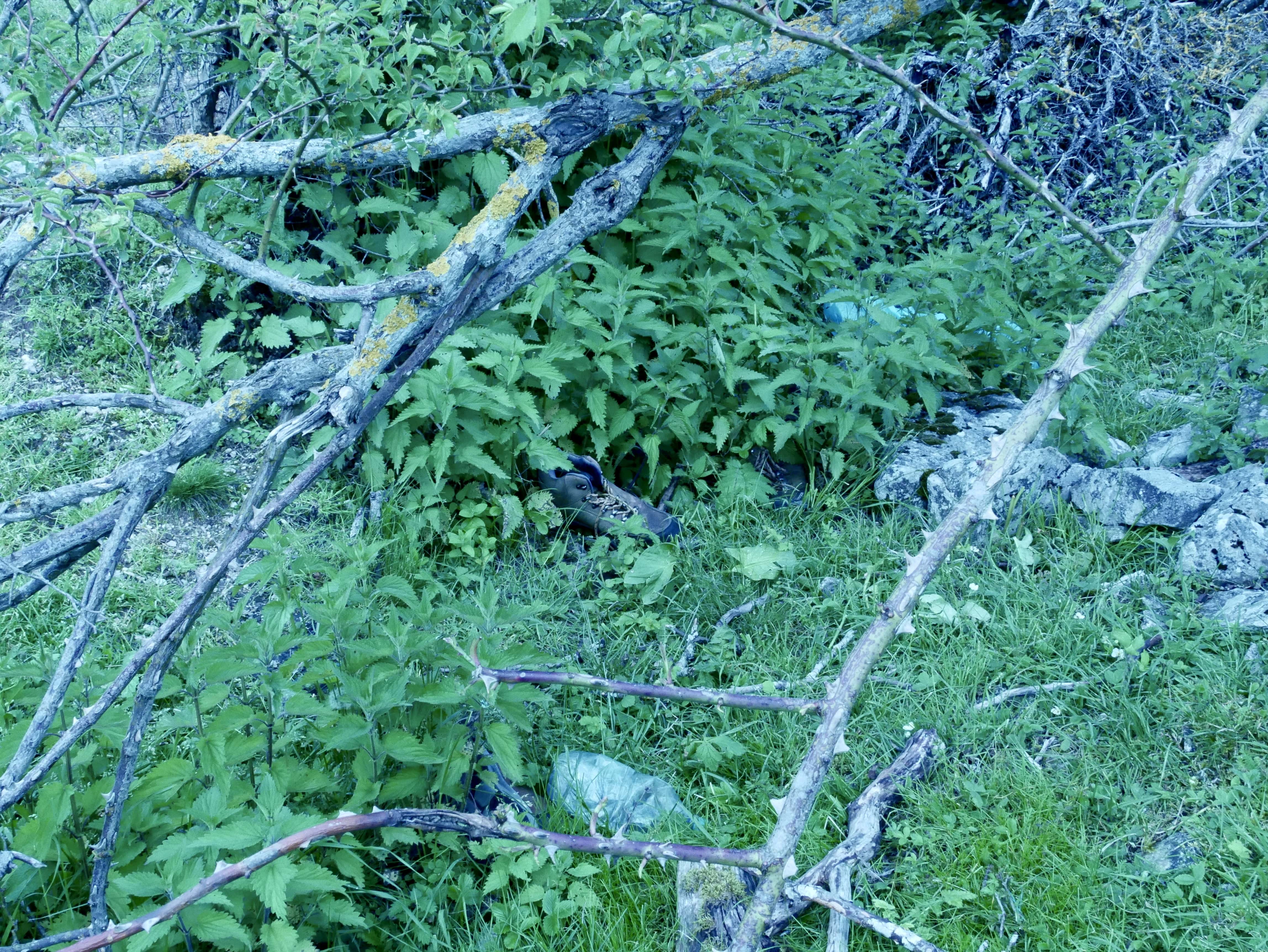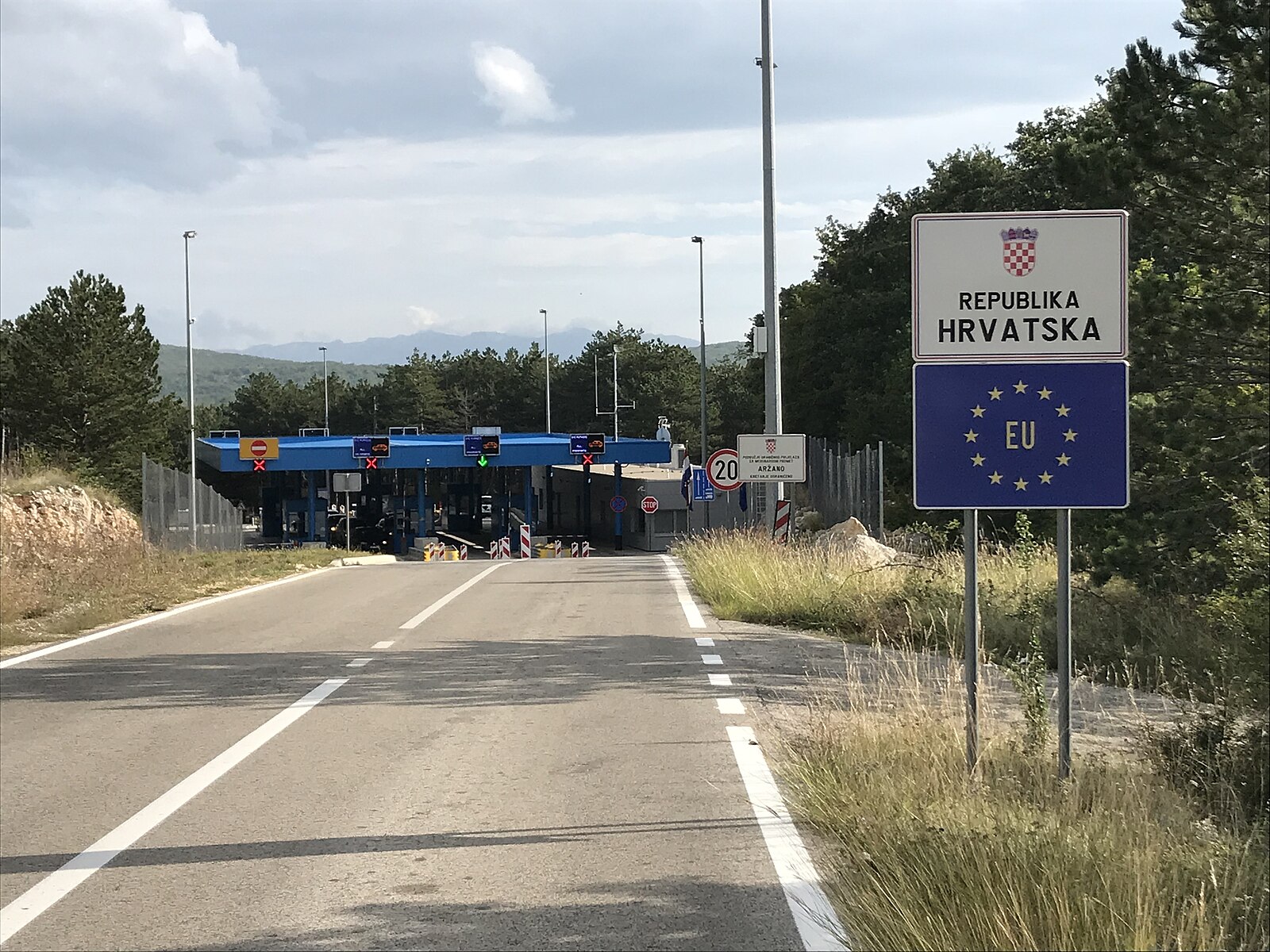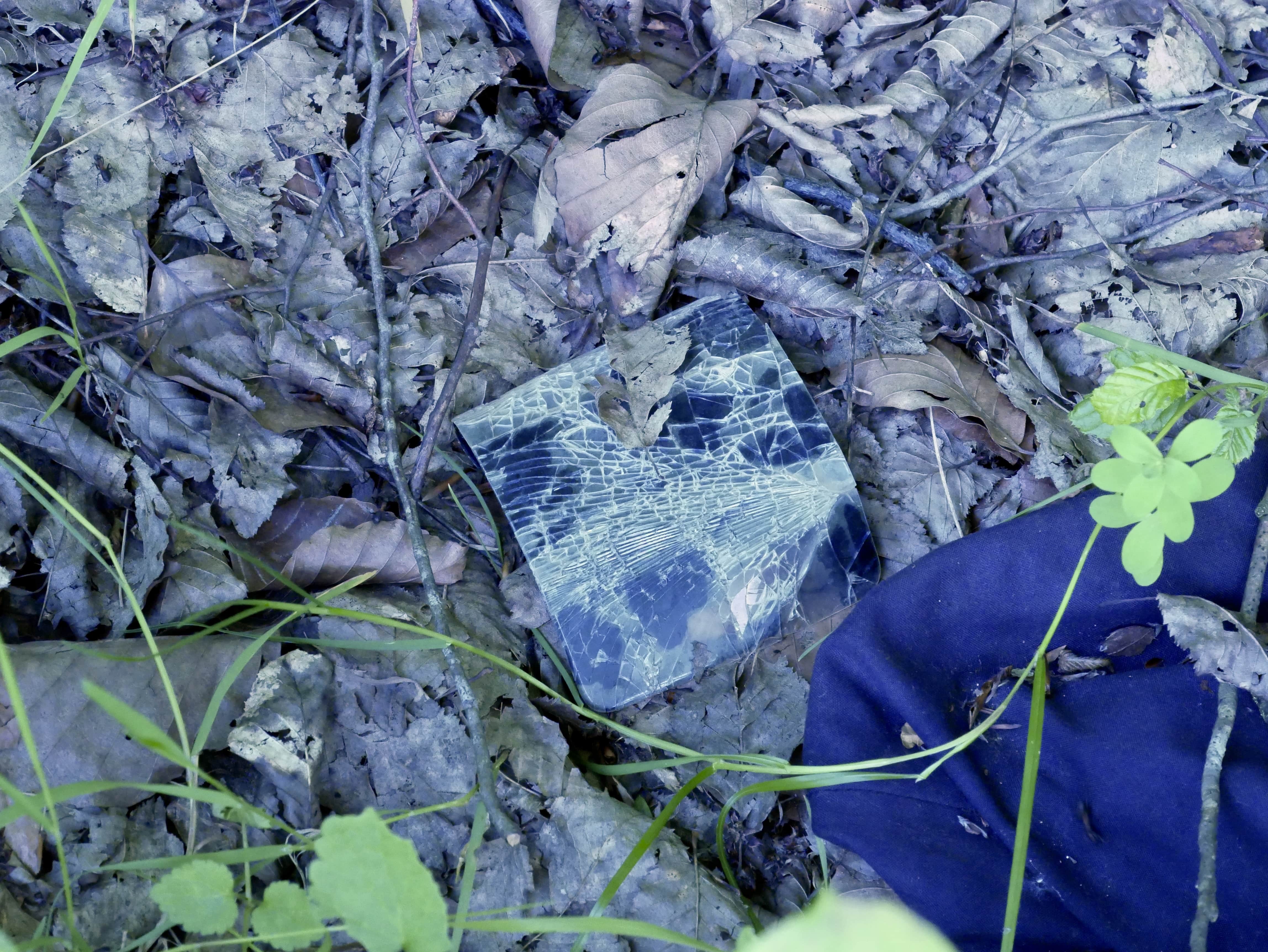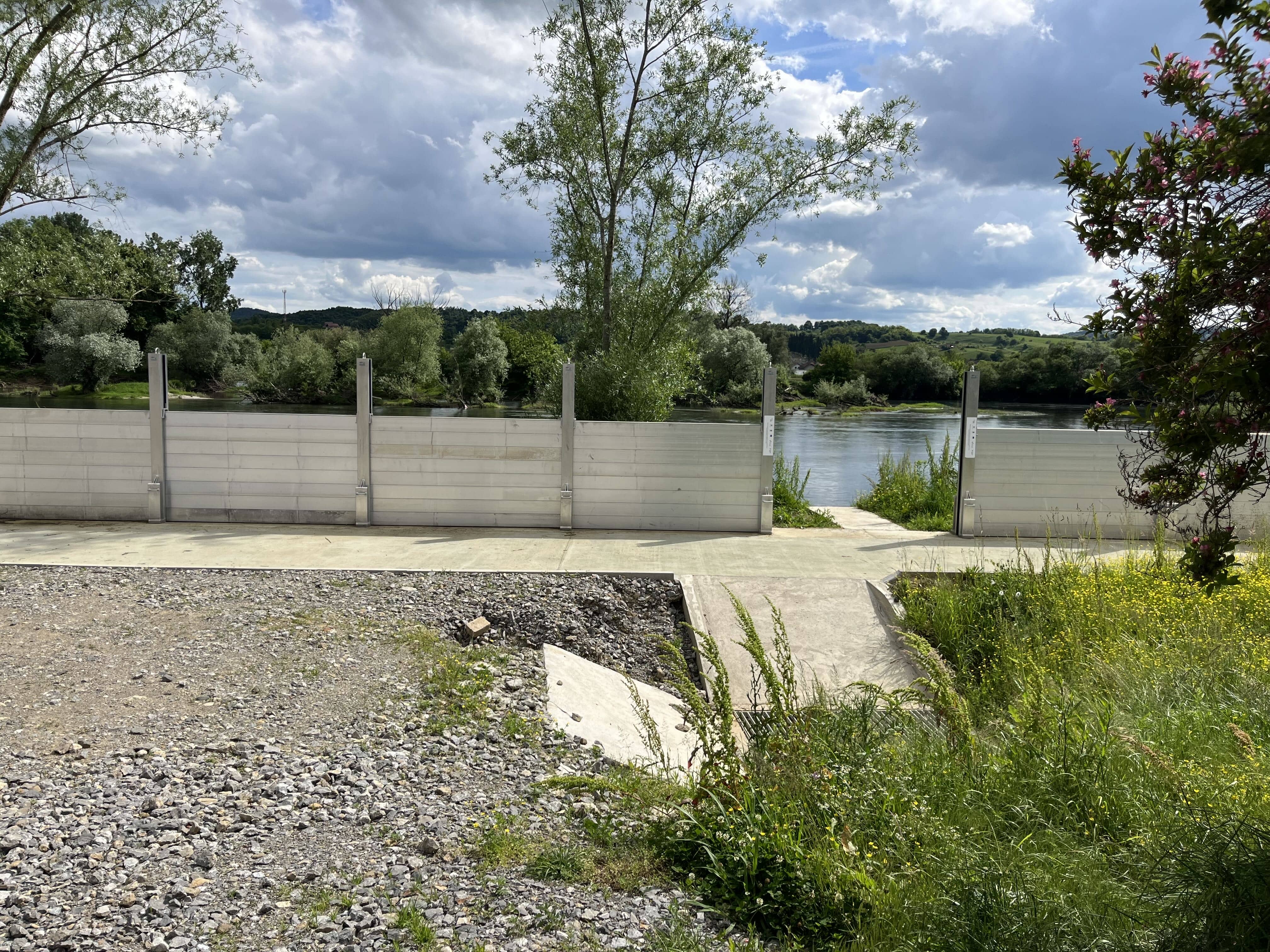Clothes in the river, backpacks on fire: The (in)visibility of pushbacks at the Croatian-Bosnian border

By Tristan Solf, Research and Investigations at the Border Violence Monitoring Network (BVMN).
Header image: Picture of personal items found near the Croatian-Bosnian border. Photo taken in May 2025.
After Croatia joined the EU’s Schengen Area on 1 January 2023, its role as a ruthless gatekeeper for people on the move making their way into the EU grew. According to the Protecting Rights at Borders initiative, between September and December 2023, Croatian authorities violently pushed back some 8,403 people who had crossed into Croatia.
For the most part, pushbacks by Croatian authorities are conducted in hiding. At the Croatian-Bosnian border, 90% of pushbacks take place along the “green border” near Bosnian cities such as Velika Kladuša, Sturlić, and Bihać. The remoteness of this area – forests, mountains, or rivers that become particularly dangerous at night, allows Croatian authorities to act with impunity.
Sometimes, this veil of covertness is lifted. This was the case in 2018, when BVMN obtained footage showing Croatian border police pushing back 368 people over to Bosnia near Lohovo.
Testimonies can also be an effective tool to expose the operations of border guards. BVMN’s archive of testimonies includes multiple references of personal belongings being thrown into rivers, lit on fire, destroyed, or trashed. Here, border guards appear to deliberately make pushbacks visible. Why are border guards not always concerned with keeping their crimes hidden? What does it do when pushbacks are visible? What does it do when you can see their traces?
Apprehension and Racialisation in (and of the) Public
In 2022, the Croatian Ministry of the Interior referenced 12,701 apprehensions of people on the move in border spaces and another 34,492 across Croatian territory. These happen in public spaces not far from the border: people are regularly apprehended in the street, in cafes, in restaurants, at bus stops, on trains, or at gas stations, as evidenced by this testimony:
“At 7am, the respondent reports that he went to a café nearby to buy hot coffee and cigarettes. Inside the café, he saw 5 people: he describes them as wearing dark blue uniforms with a large ‘policija’ sign on the back, and identifies them as Croatian police officers. Reportedly, there were 4 men and 1 woman. They all looked at him and then followed him out of the café. The respondent recalls that the female officer stopped him and asked him to identify himself and to show his passport. He replied that he did not have his passport with him, so the officer then asked him to enter a vehicle that he describes as a large black van with fences on its windows. In the van, there were already 4 people, visibly very injured and in pain. They had to wait for a while in the van, and then it drove off.”
Violence in public places, such as people getting dragged out of trains, is clearly meant to police the movement of racialised bodies. This policing started as soon as the so-called humanitarian corridor along the Balkan route was closed in March 2016.
In Bosnia and Herzegovina, for example, Kljvc’s police began stopping buses before their arrival in Bihać and ordering people to get off the bus, particularly when they carry International Organization for Migration (IOM) travel documents. In 2017, administrative checkpoints were set up throughout the country, such as a police checkpoint at the entrance to the Velečevo canton and between its federal subdivisions. Besides infringing on the freedom of movement of its citizens, the checkpoints fueled existing divisions in Bosnia and Herzegovina.
On the other hand, in Croatia, discourse on migration became securitised as soon as the humanitarian corridor was put in place. The ultimate closure of the corridor was strongly reliant on racializing practices that categorised people in transit and mobilised racist sentiments within the society at large. Discussions in Facebook groups and statements by Croatian politicians illustrate how memory of the region’s recent wars increasingly served to stage people on the move as bodies against which the country must again be defended. In Zagreb, where people gathered to give and receive clothes, food, and drink, the visible presence of transit was increasingly narrated through lenses of the undeserving or likened their existence to animals. BVMN testimonies similarly reference how “authorities treated us worse than how you would treat animals” or force people into positions described as “how dogs sit.” Right-wing groups in particular dominated debates about the presence of people on the move in forests, presenting them as large-scale threats to private property and people’s safety.

Image showing the Aržano border crossing at the Croatian-Bosnian border. Credits: Petr Vilgus
As a result of mounting Croatian pushbacks and insufficient reception infrastructures in Bosnia, people became “stuck” at Bosnia’s border with Croatia. In Velika Kladuša, local sentiments took a turn. Private huts and lodges in the forests, which had been up to that point places of rest and aid, became places for apprehending people on the move, sometimes at the request of local citizens. Croatian and Bosnian authorities rely on openly policing people on the move to make their illegality understood to local populations. Similarly, certain bus stops, cafes, hiking paths, or rivers become known as sites where “illegal” people stay, move through, and become “deserving” subjects of violence. The visible racialisation of people in transit, staging them as invasive foreign bodies whose presence could be justly met with violence, was notably captured in the statement of then-Croatian President Kolinda Grabar-Kitarović in 2019: “Illegal pushbacks? Why do you think they are illegal? We are talking about illegal migration, people trying to cross into Croatia illegally and the police pushing them back into Bosnia-Herzegovina […] Of course when you are pushing people back, there is a little bit of force.”
Belongings Stolen, Sunk, and Lit on Fire
“The group [...] explained that the officers stole their money (more than 50 euros) and took the jackets and shoes they were wearing and all the belongings they kept in their bags and threw them in the water. Afterwards, they recalled having to wear their wet clothes, as they had no other option. The officers took the food that was in the bags; they threw some apples at them, smashed the rest of the food, and threw it in the water as well.”
Evidence of pushback operations is often scarce. Despite this, pushbacks and border crossings remain visible through the things people leave or are forced to leave behind. A review of Croatian right-wing social media circles brings up photographs of waste that are presented as people “trashing” local forests with emptied containers, food wrappers, and clothing. Discussions in these posts frequently include derogatory and racialised statements in which personal belongings become the generative centre of xenophobic narratives: supposedly, people in transit structurally trash local spaces and upset the balance between locals and their environments. At this point, forests at the Croatian-Bosnian border are visibly marked by fire burns and ashes because border guards burn belongings during and after pushbacks, as reported by No Name Kitchen in October 2024. Further, Croatian border police force people to leave their belongings behind in Bosnian forests during such operations. In other cases, discarded belongings and debris left by people on the move are simply the result of needing to evade border authorities themselves.

A smashed phone, found near the Croatian-Bosnian border. Photo taken in May 2025.
Croatian border authorities strategically make use of hostile and racialised local sentiments during pushback operations. Xenophobic stories from locals about people on the move paint them as carrying scabies, lice, or polluting Bosnian rivers. Accordingly, testimonies that detail border guards throwing clothes into rivers and people losing their belongings during river pushes slot neatly into the pollution of Bosnian rivers throughout the country. Waste dumping presents a significant problem along the Drina and Danube Rivers and their tributaries: while they carry all year-round, the channels sweep up thousands of cubic metres of waste in the spring. Similarly, the Sana River is heavily polluted due to ore exploitation: at the Ribnik, Ključ, and Sanski, locals are ringing alerts due to the change in colour of their previously drinkable water. The pollution of rivers through personal belongings by people lost during crossing attempts, as well as clothes dumped into rivers by border guards, feeds into general problems with waste management in Bosnian rivers.
This pollution is a felt presence in local realms. Though the visible pollution of rivers at the Western and Northern border with Croatia is less striking to the eye than in other parts of the country, their pollution has been a pressing issue for locals for at least 20 years. Part of the locals’ relationship to the river at the Croatian-Bosnian border is its known quality as a border infrastructure – be it official designation, people (dying while) crossing, police patrols, or trash travelling at its surface. As opposed to burn marks, ashes, and discarded belongings in forests, this is not a localised visibility. Waste travels in rivers, submerges, emerges, gets stuck, and carries on. Environmental forces worsening their decay alongside persisting pollution of illegal landfills only increase its amounts and present somewhat of a downwards-winding spiral of trash in transit. This deliberate pollution is clearly contrasted by cleaning rivers and clearing vegetation by Croatian forest management companies for the explicit purpose of border management. Here, border authorities strategically engage in ambiguous maintenance and pollution of rivers that productively produce these as border infrastructures of waste, capture, and death, and people in transit as the fitting parts to the puzzle.
Keeping Pushbacks Known
“They started hitting them with an iron stick, about two or more times per person, then the officers ordered them to get on their knees and started slapping them. They told them: ‘Never come back to Croatia’. The respondent reported that authorities took off all their clothes except their underwear, they burnt all their clothes, their mobile phones, their money and everything else they had. Then the police threw them into the river, beating and kicking them.”
Croatian border authorities breach human rights on a daily basis while continuously denying the existence of such operations. Yet from time to time, the visibility of pushbacks seems almost baffling: hundreds of people are calmly marched across the Bosnian border, gunshots are frequently heard in the evening hours around Bihać, high-ranking Croatian police officers order and document pushback operations of over 1000 people in WhatsApp Groups, while others accidentally hand the fact-finding team of the Committee for the Prevention of Torture (CPT) a logbook with compromising information about illegal detention practices at their own police station.
Orders within Croatian police to push people back and “leave no trace” do not equal the absence of traces. Instead, it allows leaving certain types of traces. Setting belongings on fire and throwing clothes into rivers is indicative of governing an EU border by relying on the visibility of pushbacks. This visibility is entwined with massive surveillance towers, the construction of walls at the Una river, and frequent police patrols in border towns at night. Increasingly, borders “look” impossible to cross. And when crossings do happen, they “appear” to pollute local spaces. All the while, border police show locals who the people deserving of violence are. Croatia shows the rest of the EU that it can keep its borders relatively shut. And slowly but surely, Croatian and Bosnian towns and cities turn into border regions. Economically weak and disregarded by their central governments, border police structurally trash forests and rivers: trash, trash, trash with a figure to blame.

A picture of recently built flood protection barriers in Hrvatska Kostajnica, near an official Border Crossing Point. Photo taken in May 2025.
The Border Violence Monitoring Network accepts submissions for its blog. To contribute, please send your submission to press@borderviolence.eu
Thank you for your interest. We look forward to your contribution!
